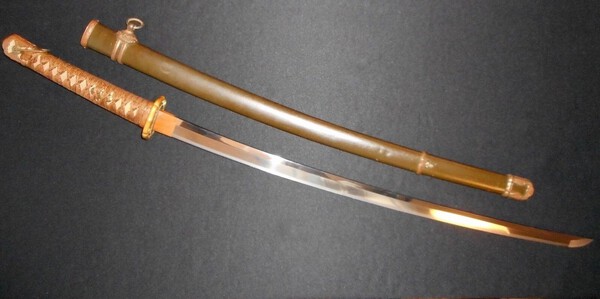-
Posts
1,525 -
Joined
-
Last visited
-
Days Won
8
Content Type
Profiles
Forums
Events
Store
Downloads
Gallery
Everything posted by BANGBANGSAN
-
大越 Okoshi/Ogoshi
-
-
-
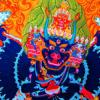
Attention Mantetsu Owners: A Survey
BANGBANGSAN replied to Bruce Pennington's topic in Military Swords of Japan
I think it is very likely to be Hiroji Okada (岡田寛二). He appears on the list of remaining personnel at the Central Research Institute in the "Manshū Railway Employees' End-of-War Records" ("満鉄社員終戦記録"). Additionally, he is mentioned in Issue No. 26 of the "Manshū Railway Central Research Institute Association Bulletin" ("満鉄中試会会報"), in a Heisei 12 (2000) article by Masashi Ishiguro titled "The Secret Story of the Escape from Dalian to Shandong After the War" ("石黒正『終戦後の大連脱出、山東行きの秘話』"). The article states:このとき相談を受けた幹部の一人が石黒正であった。5人の幹部とは、高木智雄・石川三郎・大槻茂寿・岡田寛二と石黒である。 He later served as Executive Director of Kyōwa Yūka Co., Ltd. (協和油化㈱) in 1971. -
It's a good one
-
Bruce, thank you for mentioning me, and I also appreciate Sam's recognition. Unfortunately, I’m now busier than before and don’t have as much time to be on the forum as I used to. I’m afraid I won’t be able to take on the role of Moderator. However, I’m more than willing to assist as much as possible to help you and the other members.
-
The Tokyo Artillery Arsenal 東京砲兵工廠 (Koishikawa Army factory 小石川陸軍工廠) used the same cannonball mark as the Kokura Army Arsenal(小倉陸軍造兵廠). The Koishikawa Army factory began operations in 1871, and on October 10, 1879, it was officially established as the Tokyo Artillery Arsenal by Army Ministry Order No. 74. On April 1, 1923, the Tokyo Artillery Arsenal merged with the Osaka Artillery Arsenal(大阪砲兵工廠)and was renamed the Army Ordnance Arsenal Tokyo Factory(陸軍造兵廠東京工廠).The Osaka Artillery Arsenal was renamed the Army Ordnance Arsenal Munitions Factory(陸軍造兵廠火工廠). On September 1, 1923, the Great Kanto Earthquake(関東大震災) caused severe damage to the factory. Since the full-scale restoration of the Koishikawa facility required enormous costs, a decision was made to consolidate its functions and gradually transfer them to the Kokura Ordnance Manufacturing Plant(小倉兵器製造所 ), which was directly managed by the Chief of the Army Ordnance Arsenal. The relocation process began in 1931. In October 1933, the Kokura Ordnance Manufacturing Plant was upgraded to Kokura Army Arsenal( 小倉陸軍造兵廠), with additional facilities for weapons manufacturing(兵器製造所) artillery equipment production(砲具製造所) and shell manufacturing(砲弾製造所). During this period, the Kokura Arsenal also used its cannonball mark. By October 1935, the relocation of the Tokyo Arsenal to the Kokura Arsenal was fully completed, marking the end of the Tokyo Artillery Arsenal’s 66-year history. Although the Type 95 NCO sword was finalized in 1935, it remained under refinement and was not mass-produced until 1937. As a result, the Type 95 swords bearing the Kokura cannonball mark were produced between 1937 and 1940.
-
From my observation, some Type 32 swords not only have the "寿" mark but also "寿" + "検" (Inspection). Does this mean "inspected by Suya"? I'm not sure.
-
It could also be an inspection team mark ,similar to those on the Type 30 bayonet.I think they often use an abbreviation of the location of the team or the team leader's family name . If that's the case, I have no idea what the abbreviation would be. There are quite a few family names that include "寿." Here are a few examples: 寿田 (Suda), 寿崎 (Suzaki), 寿松 (Sumatsu), 寿山 (Suyama), 寿川 (Sugawa), 寿本 (Sumoto), 寿野 (Suno), and 寿藤 (Sutō).
-
Since Suya exported 900 swords to Great Qing Imperial dynasty of China(大清帝國) that were similar to Type 32 in June 1906, it is possible that they were also involved in Type 32 production, but there is no evidence to support this.
-
-
Sam It has been discussed here.
-
@george trotter 陸軍主計中尉 Army Paymaster/Accounting First Lieutenant 势(Ikioi)IJA Unit Designation=2nd Army(第2軍) 第八移動xxx( 8th Mobile xxxUnit),it's possible 第8野戦憲兵隊 8th Field Military Police Unit.
-
-
Yep, this one has been sitting on eBay for over two years. The seller just wants too much for it.
-
That's the mark of 金城鑿岩機株式会社 (Kaneshiro Seizo KK), one of the subcontractors that made Type 30 bayonets. I mentioned it in another post. It's different from the encircled star 'K' mark on this sword. Here is more information about Army sword steel 刀剣鋼(陸軍). http://ohmura-study.net/241.html http://ohmura-study.net/206.html
-

1892 Type 25 survey assistance needed
BANGBANGSAN replied to John C's topic in Military Swords of Japan
Thomas I can't answer questions #1 and #3 until a few months later since the sword is in FL and not with me. It has the rivet and finger loop in the crossguard unfilled and has partial leather remaining. -

1892 Type 25 survey assistance needed
BANGBANGSAN replied to John C's topic in Military Swords of Japan
-

MANTETSU INSTRUCTOR'S TALISMAN TANTO
BANGBANGSAN replied to KungFooey's topic in Military Swords of Japan
-

Lookng for "Japanese Pattern Dirks .The Banks Collection"
BANGBANGSAN replied to BANGBANGSAN's topic in Wanted to Buy
I see -

Lookng for "Japanese Pattern Dirks .The Banks Collection"
BANGBANGSAN replied to BANGBANGSAN's topic in Wanted to Buy
Thansk bro,I just want to check the entire book; it seems to have quite a few dirks in it. -
This is mark of 越前屋多崎商店 Echizen’ya Tazaki Shōten .



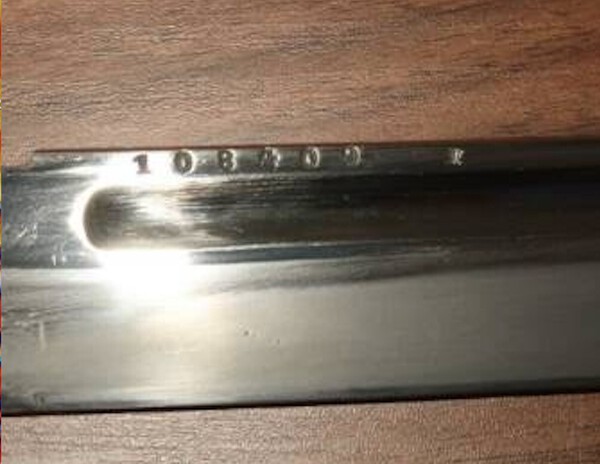







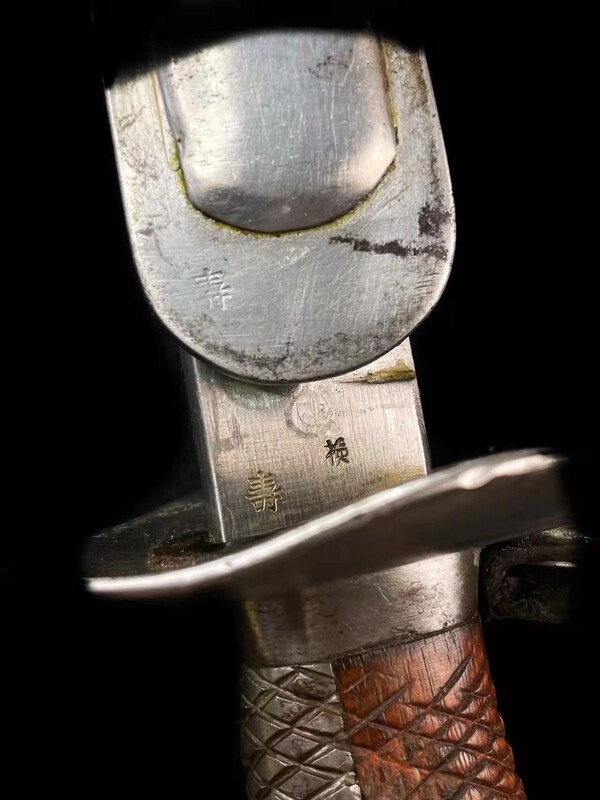

.thumb.jpg.2effcb473bb096a96fd263a2f247bf71.jpg)
.thumb.jpg.297b73c6720755eef31a41d284622ec4.jpg)




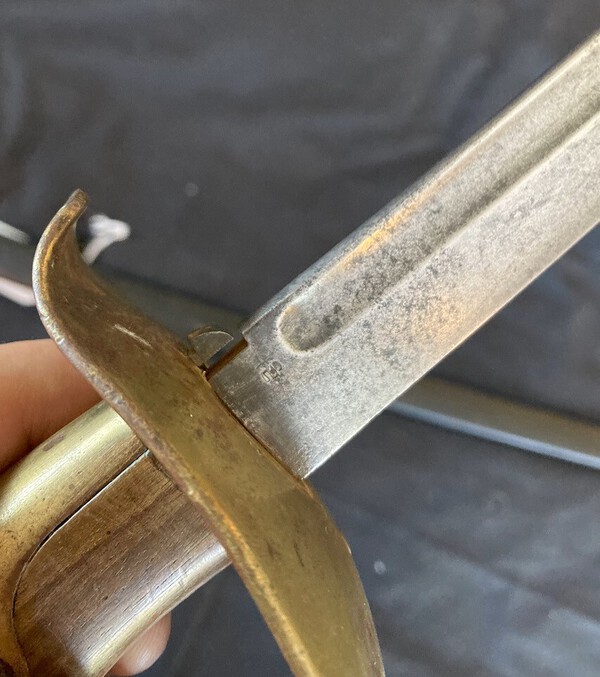
.thumb.jpg.a9b75b3eeb9de0730d19dfb8032cdf59.jpg)
.thumb.jpg.1b2a51c6d35871aea7a50858f5e5b250.jpg)
